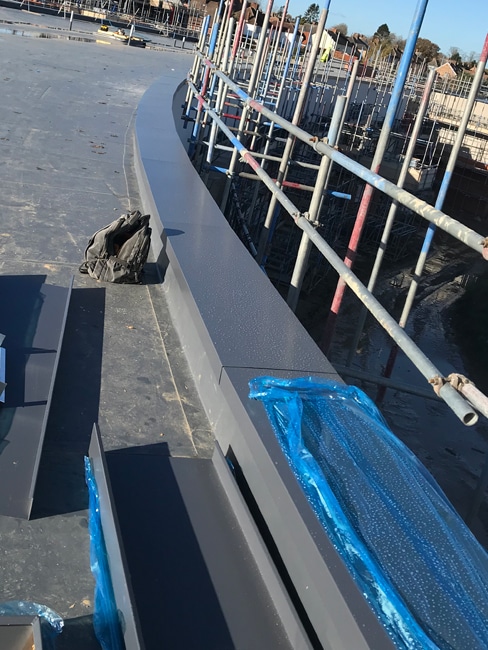Aluminium Capping/Coping
JB Products manufactures aluminium coping and capping for the sealant of parapet and boundary walls, offering the ultimate weather protection and finishing touch for large scale residential construction projects.
Finishing & Capabilities
With emphasis on the quality of our goods, JB Products ensures our aluminium coping is made to last. We manufacture to exacting project specifications, enabling ease of installation, hidden fixing and high performance of our aluminium coping. Throughout this service, JB Products works closely alongside quantity surveyors and architects to ensure we meet all requirements within the agreed timescales. Our aluminium copings are polyester powder coated (PPC) to any RAL or BS colour that is required.
Why Choose JB Products?
Our dedication to our industry and services, combined with decades of experience within the field, facilitates the reliable, premium range of products which has earned JB Products our outstanding reputation.
Complete manufacturing
service
JB Products provides a complete manufacturing service for the production of our metal products, in conjunction with our expert advice and guidance. We guide customers throughout the design, creation, and installation of systems, to ensure JB Products provides appropriate solutions for our customers’ projects.
Enabled by a comprehensive plant list, JB Products undertakes all manufacturing in-house, including the cutting, forming, and sub assembly through welding. We can do this with aluminium, abd also stainless and galvanised steel, in gauges from 0.70-10.00mm, whilst adhering to tight tolerances.
Our design services are performed by experienced specialists, using the latest 2D and 3D CAD software.
JB Products further delivers products across the UK for customers, with safe access to sites granted by our FORS accreditation.

FAQ's - Aluminium Capping/Coping
Aluminium coping is a lightweight and versatile covering, meant for protection against weather, ventilation, and aesthetics of a flat roof parapet wall or boundary wall. They are an economic and effective solution which can be used on residential and commercial builds alike.
Coping and capping is often used interchangeably,
Coping should be made from non-porous, durable materials such as metal or stone. Aluminium, stone, and stainless steel are some examples of common coping material.
Aluminium and stainless steel are both highly resistant to corrosion, making them suitable choices for coping, whilst stone may be chosen due to meeting a specific design brief.
- To provide a good quality finish to the external face of a parapet.
- To prevent water from entering the building.
- To prevent damage to the brickwork and render from rainwater, snow or ice.
- To provide a coloured decorative finish to a parapet.
Secret fix copings are a unique type of coping that has been designed to fit snugly on top of a parapet. To mount the coping onto your wall and conceal the fixing, you will need to use a special clip system which is concealed behind the coping itself.
The secret clip can easily be attached using mechanical fixing without any unsightly fixing visible from the ground or from the roof.
A parapet wall is a low wall that runs along the roof edge to protect the roof from damage. It’s usually made of concrete or brick, but can also be made of other materials.
Parapet walls are used in residential and commercial buildings, particularly those with flat roofs where safety is an issue. Their design depends on their purpose – they may be decorative or purely functional.
Several materials can be used for capping a parapet wall. The most common materials include:
- Concrete
- Aluminium
- Brick
- Sandstone
- Granite
- Marble
You may have seen aluminium coping/capping on the top of a building. It can be used on both new and existing buildings.
A clip-fixing design is a method of securing the coping to the wall by using clips that are hidden behind the capping. The clips are fixed to the wall with a hidden fixing.
No visible fixings are a benefit for the following reasons:
- Clean aesthetical look.
- If no fixings are showing, then there is no need for maintenance on any fixings such as re-painting or replacing screws etc., which can be time-consuming and expensive.
The thickness of the aluminium coping depends on the width of the parapet wall and the architects specification. 2mm is the usual thickness, however there are occasions where 3mm thick aluminium is used.